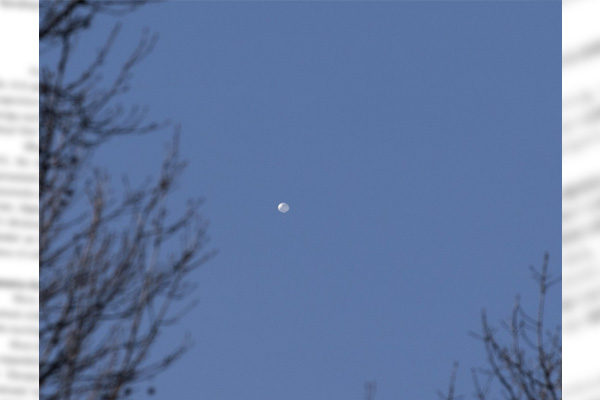A U.S. Air Force F-22 fighter shot down a Chinese reconnaissance balloon that flew across the continental United States. Japan has so far failed to enact any law to tackle foreign balloons entering into Japan’s airspace.
Article 84 of the Self-Defense Forces Act provides the Japanese SDF with only two options against an airspace violation: either to force the foreign intruder plane to land or fly away from Japan’s airspace. The SDF are not authorized to shoot down any intruder. Article 82-3 stipulates ballistic missiles, etc. may be destroyed if they are likely to inflict grave damage to people or assets in Japan. Whether the stipulation can be applied to balloons is left unclear. Japan should enact a law to specify how it would tackle foreign balloons flying into Japanese airspace.
China’s description as a stray civilian balloon represented a big lie
China insists that the balloon was a civilian one for meteorological research and deviated from its planned course to enter U.S. airspace due to force majeure. This explanation represents a big lie. The truth will come out as the relics of the balloon are collected and analyzed.
In addition to a balloon over the U.S., another was spotted in Costa Rica and Colombia around the same time. Balloons were also seen in skies over India’s Andaman and Nicobar Islands in January 2022, off Hawaii in February 2022 and over Japan’s Tohoku district in June 2020. All these balloons could not have flown there due to force majeure. It is clear that they were flown for reconnaissance purposes.
The description of the balloon as civilian is also a lie. It must have been operated by the Chinese People’s Liberation Army (PLA) Strategic Support Force that undertakes intelligence and space operations.
Spy satellites’ flight schedules are well known, allowing military ships and units to readily conduct radio wave’s emissions control (EMCON) to prevent their intelligence from being stolen by such satellites flying over them. Balloons might have been used to make up for such defects of spy satellites.
Aiming to monitor communication involving ICBM base?
The Chinese balloon was spotted over Montana where an intercontinental ballistic missile (ICBM) launch site is located. The balloon might have attempted to capture communication between the headquarters and local units.
When I attended an international conference organized by the Canadian Pacific Force, a Chinese State Oceanic Administration official described the Xue Long icebreaking research vessel in the Arctic Ocean as surveying the impact of the Arctic air mass on mainland China, indicating that the ship was on a civilian scientific mission. But the official personally told me that the icebreaking ship was also preparing for opening a Northern Sea route and exploring natural resources. Beijing’s official explanation may deviate from real purposes this time again.
The Chinese balloon’s incursion into U.S. airspace led U.S. Secretary of State Antony Blinken to postpone his imminent China visit. Japan should follow the cue of such tough U.S. attitude.
Fumio Ota is a Councilor and a Planning Committee member at the Japan Institute for National Fundamentals. He is a retired Vice Admiral of Japan’s Maritime Self-Defense Force.


